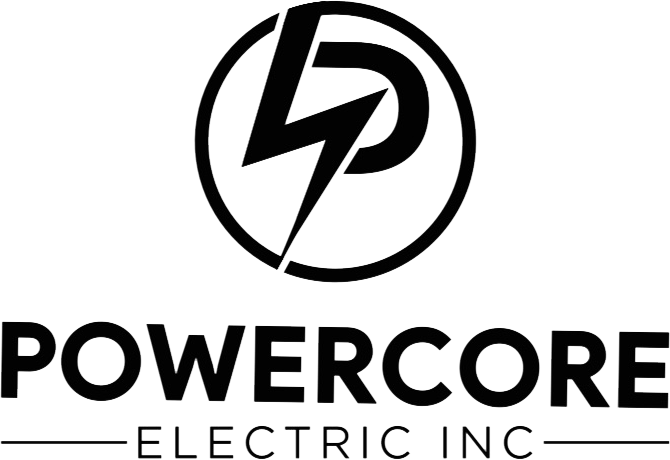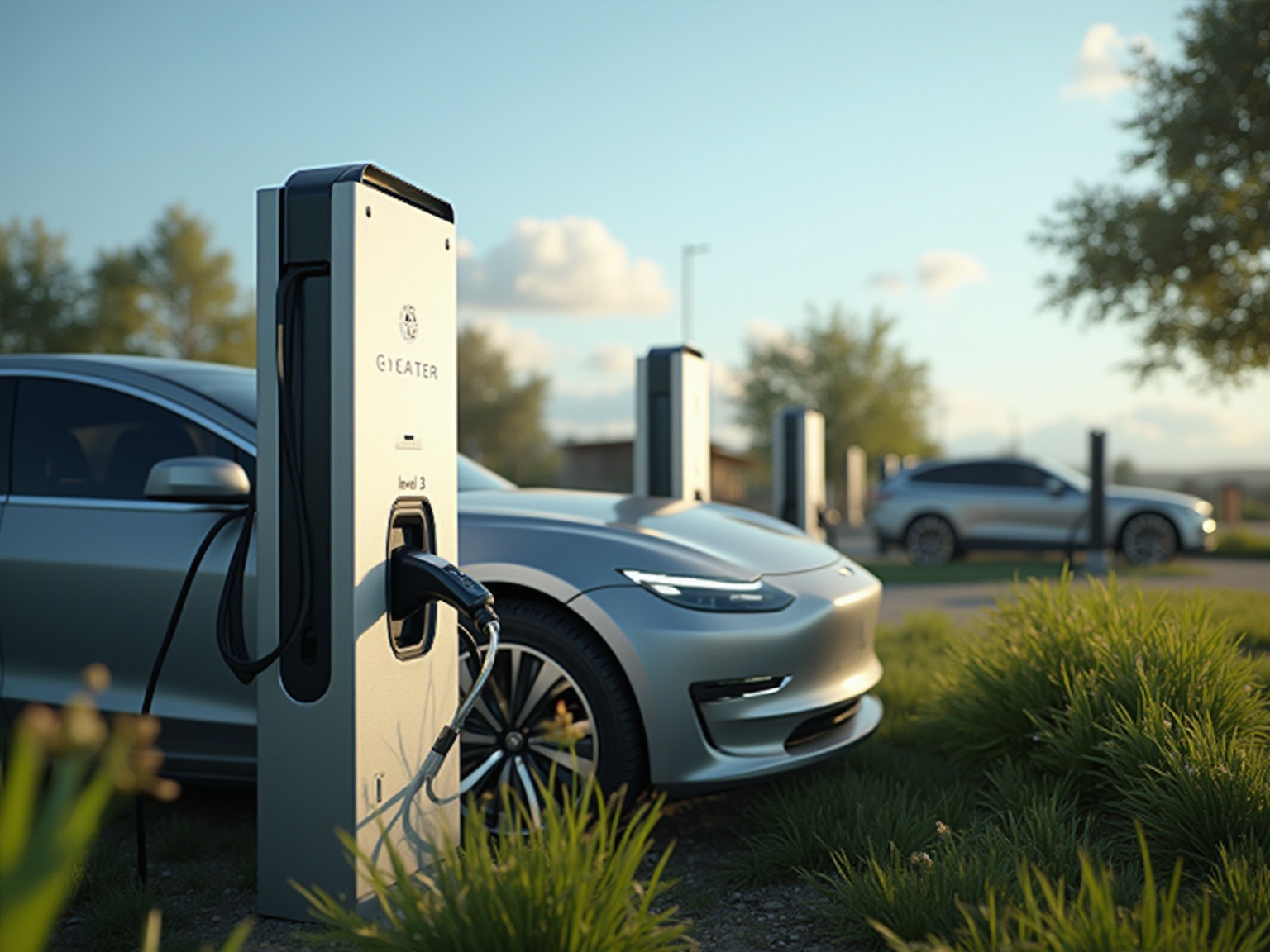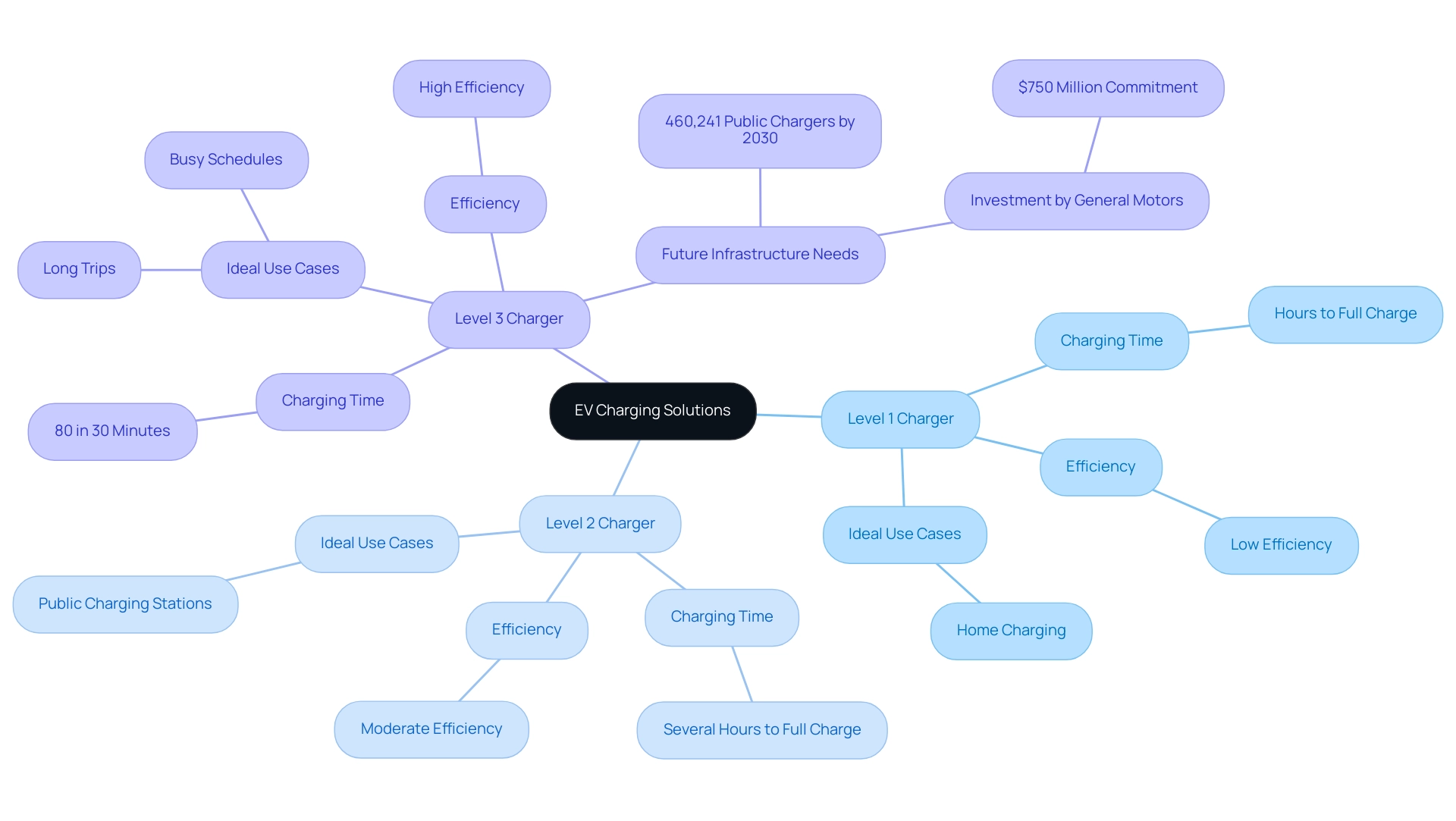Overview
The article focuses on the top home solutions for Level 3 chargers, highlighting their advantages for fast electric vehicle (EV) charging. It emphasizes that Level 3 chargers can significantly reduce charging time to about 30 minutes for 80% battery capacity, making them ideal for busy homeowners, while also discussing the importance of assessing costs, benefits, and the integration of these chargers with renewable energy sources for long-term savings and sustainability.
Introduction
As electric vehicles (EVs) continue to gain popularity, the need for efficient charging solutions has never been more pressing. Enter Level 3 chargers, the superheroes of the EV charging world, capable of delivering a substantial battery boost in just 30 minutes.
For busy homeowners who often find themselves on the go or planning long trips, understanding these rapid chargers can transform the way they approach energy consumption and vehicle maintenance.
With the increasing demand for EV infrastructure and the promise of financial incentives, investing in a Level 3 charging station is not just a trend—it’s a smart, forward-thinking choice.
This article explores the ins and outs of Level 3 chargers, from evaluating costs and benefits to selecting the right model for your home, while highlighting the exciting innovations shaping the future of electric vehicle charging.
Understanding Level 3 Chargers: The Fastest EV Charging Solution
Type 3 power stations, frequently called DC fast stations, are the leaders of efficiency regarding electric vehicle (EV) refueling. Unlike their Level 1 and Level 2 counterparts, which rely on alternating current (AC) and can take hours to fully charge a vehicle, Level 3 systems can boost an EV’s battery to approximately 80% in a mere 30 minutes! This rapid power replenishing capability is a game-changer for busy homeowners, especially for those who often rely on a level 3 charger home while embarking on long trips or managing a packed schedule.
Comprehending how these devices function and what they need is crucial for assessing if a level 3 charger home is the ideal match for your requirements. With the increasing demand for electric vehicles, Canada will require nearly 460,241 public EV chargers by 2030, emphasizing the urgency for effective power solutions. As Omar Vargas, head of public policy at General Motors, states, ‘We’re assisting that kind of planning, and we’re pretty confident that in the next couple of years, we’re going to have a vigorous EV infrastructure in the United States.’
This highlights the significance of investing in residential refueling infrastructure. Powercore Electric offers customized EV power solutions, including a level 3 charger home with expert installation services to guarantee smooth incorporation into your residence. Our chargers come equipped with advanced features that enhance power-up speed and efficiency, setting us apart from competitors.
With General Motors dedicating $750 million in private funds to create EV refueling stations, it has never been more crucial to ensure you have a level 3 charger home. Ready to make the switch? Contact Powercore Electric today to learn more about our services and get a quote!
Evaluating the Costs and Benefits of Level 3 Charging Stations
When you’re contemplating an investment in a Level 3 power station for your home, it’s important to assess both the upfront costs and the long-term benefits. Typically, the initial investment can range from $10,000 to $40,000, depending on the charger model and installation requirements. Luckily, numerous financial incentives are available to ease this burden.
Homeowners may be eligible for federal tax credits and state rebates, which can significantly reduce overall expenses. As emphasized by Fortune Business Insights, the global electric vehicle refueling station market is anticipated to surge from $22.45 billion in 2024 to an impressive $257.03 billion by 2032, expanding at a CAGR of 35.6%. This surge in EV adoption highlights the importance of having a fast refueling solution like a level 3 charger home, and presents the potential for substantial energy savings over time.
Notably, Qmerit, a trusted EV charger installation partner, has successfully set up over 450,000 stations across North America, ensuring homeowners receive reliable expertise. Furthermore, innovations such as Electric Road Systems (ERS) being developed in Sweden and France demonstrate the evolution of power supply technology, aiming to decrease CO emissions and promote a more sustainable transportation infrastructure. Additionally, Powercore Electric Inc. offers a range of services, including solar panels and battery backups, which can complement your investment in EV charging solutions.
By grasping these financial elements, technological advancements, and the offerings from Powercore Electric Inc., you can make well-informed decisions that align with your budget and commitment to sustainable energy solutions. Furthermore, considering solar-powered heating solutions can provide additional energy savings and enhance your residence’s efficiency.
Choosing the Right Level 3 Charger for Your Property
Choosing the ideal level 3 charger home device isn’t merely about selecting any model off the shelf; it’s a careful process that entails several key considerations. First and foremost, think about the type of electric vehicle (EV) you own. Different models have unique power requirements, and knowing your car’s specs will guide you in making the best choice.
For instance, the Porsche Wall Station Connect can send up to 19.2 kW to a connected EV, highlighting the potential power available from certain devices. Next, reflect on your daily driving habits. If you’re often active, a device with greater output can considerably decrease downtime by offering quicker power replenishment—just remember that these units may need a more powerful electrical system in your residence.
As Antuan Goodwin, an automotive specialist, observes, “The vast majority of Type 2 residential electric vehicle charging stations are designed around relatively common 40 to 60-amp, single-phase 240-volt American circuits and the 7- to 11-kilowatt maximum charging speed of most EVs.” This context is essential when considering the existing electrical infrastructure of your property. While numerous Type 2 charging stations generally operate on standard circuits, a Type 3 station may require something more specialized.
To help navigate these choices, consider reaching out to Powercore Electric Inc. for professional advice tailored to your setup and lifestyle. They provide installation and consultation services specifically for a level 3 charger home, ensuring that you find the right fit for your residence.
Finally, take a look at the various models available today. Some are tailored for residential use, while others shine in commercial settings. The JuiceBox EV Charger, for example, is a top choice known for its minimalist design and extensive WI-Fi capabilities, allowing you to monitor and customize your charging experience through the Enel X Way app.
Although it comes with a higher price tag, its features make it worth considering for efficient home management. Pricing for Tier 3 devices can differ, so it’s prudent to talk about available packages with Powercore Electric Inc. Remember, most EV manufacturers recommend keeping the battery charged between 20% and 80% to prolong battery life, so a well-informed decision will not only enhance your EV experience but also ensure your charging solution is effective and convenient.
For a consultation, contact Powercore Electric Inc. at (916) 699-8778.
Key Advantages of Level 3 Charging for Electric Vehicles
Type 3 charging stations provide numerous advantages that render them a superb option for electric vehicle (EV) owners. One of the standout features is their incredible speed; these devices can recharge your EV at a remarkable rate of 3 to 20 miles of range per minute, ensuring a quick turnaround that reduces downtime significantly. In fact, you can power up your vehicle to 80% in under 30 minutes—perfect for families with multiple cars or anyone who frequently embarks on long trips.
Beyond convenience, having a level 3 charger home can enhance your property’s value. As eco-conscious living becomes more sought-after, many potential purchasers are looking for residences equipped with these modern amenities. Additionally, these devices seamlessly integrate with renewable energy sources, such as those provided by Powercore Electric Inc.’s solar panels, allowing you to power your EV using solar energy.
This not only reduces your carbon footprint but can also lead to lower energy costs—what’s not to love? Furthermore, Powercore’s battery backup solutions guarantee that your home stays energized during outages, further increasing the advantages of having a third-tier charging device. Some automakers also provide complimentary or reduced access on particular networks as part of promotional vehicle purchase agreements, enhancing the overall value of owning a Type 3 device.
However, it’s essential to remember that while type 3 power supply is fast and convenient, it is primarily found in commercial areas and can lead to quicker battery degradation if used regularly. As the President of Qmerit Network remarks, ‘Recommended by automakers, EV supply manufacturers, utilities, businesses, and homeowners alike, and with over 450,000 EV stations installed across the U.S. and Canada, no one is more experienced in energy transition technologies than Qmerit.’ This endorsement highlights the growing recognition of the level 3 charger home as a valuable investment for both your vehicle and your home, especially when integrated with Powercore Electric Inc.’s comprehensive solar energy solutions.
The Future of Level 3 Charging: Trends and Innovations
The electric vehicle (EV) market is on an exciting upward trajectory, and the technology behind Level 3 power supply is evolving right alongside it. With recent initiatives in Southern California, such as solar-powered EV refueling stations in Los Angeles, homeowners can maximize their energy savings while contributing to a greener future. Innovations such as wireless power and ultra-fast energy capabilities are just around the corner, promising even quicker and more convenient options for EV owners.
Imagine being able to charge your vehicle in minutes instead of hours! Furthermore, improvements in battery technology are poised to boost efficiency and extend vehicle range, rendering EVs an even more appealing option for a broader audience.
When evaluating a level 3 charger home for use, costs usually vary from $10,000 to $40,000, depending on the complexity of the installation and features of the unit. Homeowners have options such as standalone chargers or integrated solar solutions that can further reduce energy costs. According to forecasts, global lithium-ion automotive battery manufacturing capacity is expected to reach 3.2 TWh by 2030, a significant increase from 300 GWh in 2021, showcasing the rapid advancements in this field.
As California’s new building codes and NEM 3.0 create more opportunities for homeowners, the possibilities for eco-friendly power solutions are expanding. Significantly, PwC forecasts that multi-unit residential power options will expand from almost non-existent at present to approximately 17% of the market by 2030, emphasizing the potential for homeowners to invest in type 3 power solutions.
Additionally, Sweden’s recent pledge to transform a highway into a permanently electrified route illustrates practical progress in EV infrastructure. By investing in a level 3 charger home today, homeowners not only benefit from the latest technologies but also position themselves to take full advantage of the exciting advancements coming in the future of electric vehicle energy supply. Additionally, utilizing roof designs that maximize solar energy can further enhance the efficiency of these power stations.
For more insights and options on solar panels, battery backups, and EV charging stations, feel free to reach out to Powercore Electric Inc. We’re here to help you harness the power of solar energy and enhance your home’s sustainability!
Conclusion
Investing in a Level 3 charging station is not just an upgrade; it’s a strategic move towards a more efficient and sustainable future. With the ability to recharge an electric vehicle to 80% in about 30 minutes, these chargers cater perfectly to the needs of busy homeowners and frequent travelers. Understanding the various models, evaluating costs versus benefits, and tapping into available financial incentives can empower homeowners to make informed decisions that align with their lifestyle and budget.
As the electric vehicle market continues its rapid expansion, the innovative technologies behind Level 3 charging are evolving as well. Homeowners who choose to embrace these advancements not only enhance their own convenience but also contribute to a greener environment. The integration of renewable energy sources, such as solar power, with Level 3 chargers can lead to significant cost savings and reduced carbon footprints, making this investment even more appealing.
Ultimately, the shift towards Level 3 charging solutions represents a commitment to both personal convenience and environmental responsibility. With support from experts like Powercore Electric Inc., homeowners can navigate this transition confidently, ensuring their charging infrastructure is equipped to meet future demands. Embracing the future of electric vehicle charging is a step towards a smarter, more sustainable home.



